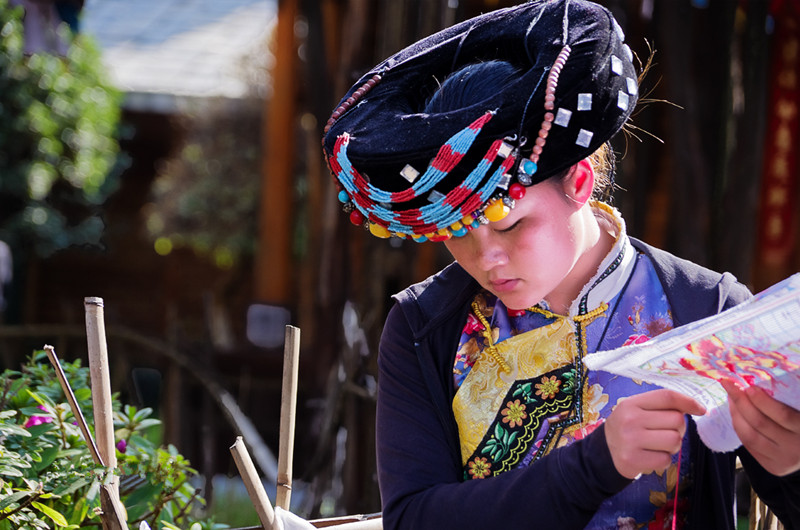Chinese Name: 宜良九乡溶洞神田
English Name: Magical Stone Terraced Fields of Jiuxiang Caves in Kunming
The Jiuxiang Caves (九乡洞), located in Kunming (昆明), are surrounded by extensive carbonate rock formations that date back to the Sinian period, approximately 600 million years ago. These carbonate rocks spread across the Jiuxiang Maitian River (麦田河) region, covering an area of about 100 square kilometers. Since the Cenozoic Era (65 million years ago), the Yunnan Plateau has been uplifted along with the Tibetan Plateau, and the erosion of the Nanpan River (南盘江) has carved the eastern Yunnan Plateau, creating the stunning Nanpan River Canyon (南盘江峡谷). The first-level tributary, the Maidian River (麦囚河), deeply cuts through the Jiuxiang area.
Through the powerful interactions of surface water flow and groundwater flow, a unique and spectacular karst cave group and lush canyons have formed in Jiuxiang. The intermittent uplift of the earth’s crust has led to the evolution of a multi-layered karst cave system, resulting in an impressive and distinct system of caverns.
The Divine Fields of Jiuxiang
Inside the Jiuxiang Caves, there is a remarkable area known as the “Divine Fields” (神田), scientifically referred to as the Bianshi Dam (边石坝). This is a rare landscape formed by chemical sedimentation in karst caves. The cave walls are permeated by saturated karst water rich in calcium and magnesium bicarbonate, which flows gently to form sheet-like water flows. Upon encountering obstacles, sedimentation occurs, leading to the creation of a natural wonder formed over billions of years—the Bianshi Dam group, which is the largest of its kind among the over 2,000 open cave scenic spots in the world.
The Divine Fields are a large Bianshi lake group, covering an area of over 100 square meters and reaching depths of more than 10 meters. They exhibit a staggered arrangement and breathtaking landscapes, making them a rare wonder praised by international cave experts as one of the world’s greatest natural marvels.
Like the terraced rice fields of Yuanyang (元阳梯田), the Divine Fields are characterized by accumulations of calcium carbonate, making them the most distinctive landscape within the Jiuxiang cave group.
The largest area of the Divine Fields spans hundreds of square meters, with a maximum depth of 3 to 4 meters. Their graceful and staggered shapes create an impressive sight. In Jiuxiang, the groundwater flows sheet-like along the sloped cave walls. When it encounters obstacles, the hydrodynamic conditions change, leading to the release of carbon dioxide gas from the water, resulting in calcium carbonate accumulating to form barriers, known as the Bianshi Dam group. The Jiuxiang Divine Fields represent a rare large-scale cave Bianshi dam group in China, known for its beautiful and staggered formations.
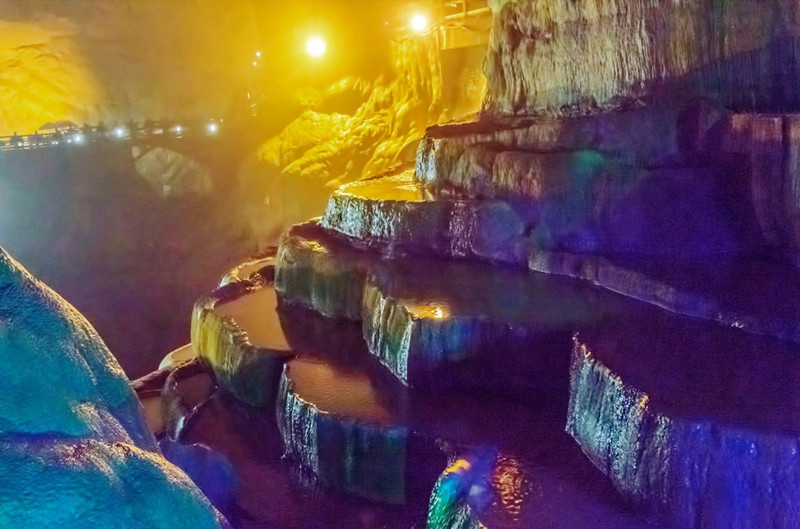
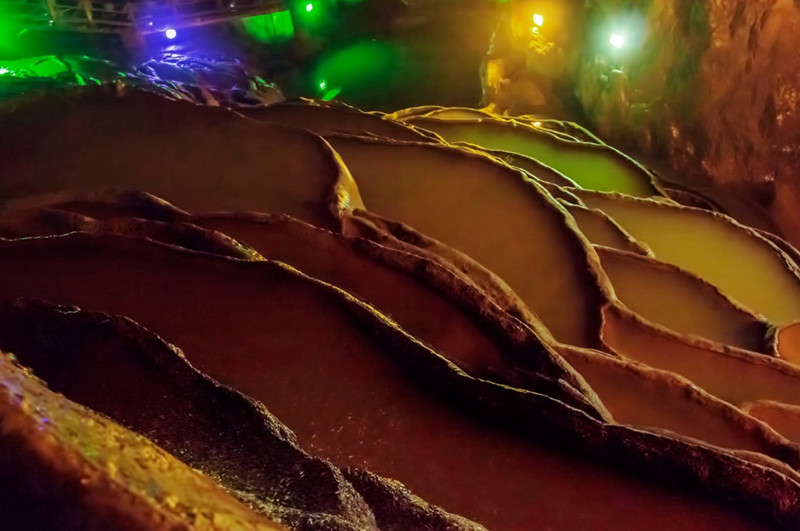

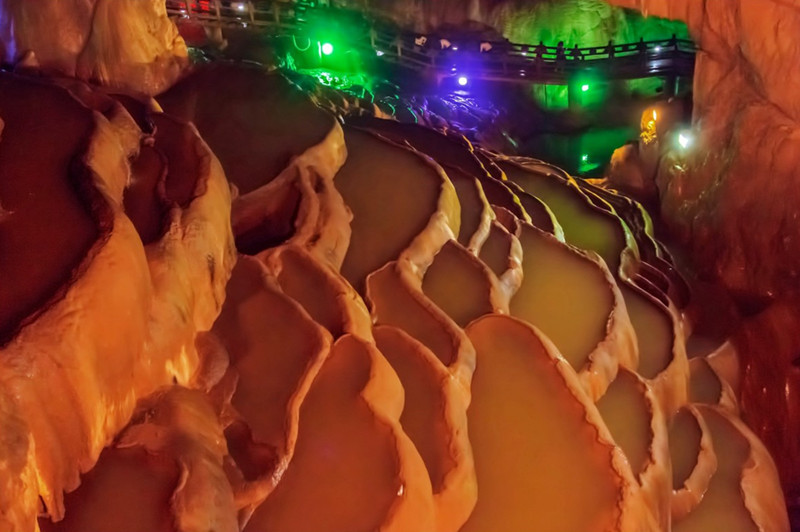
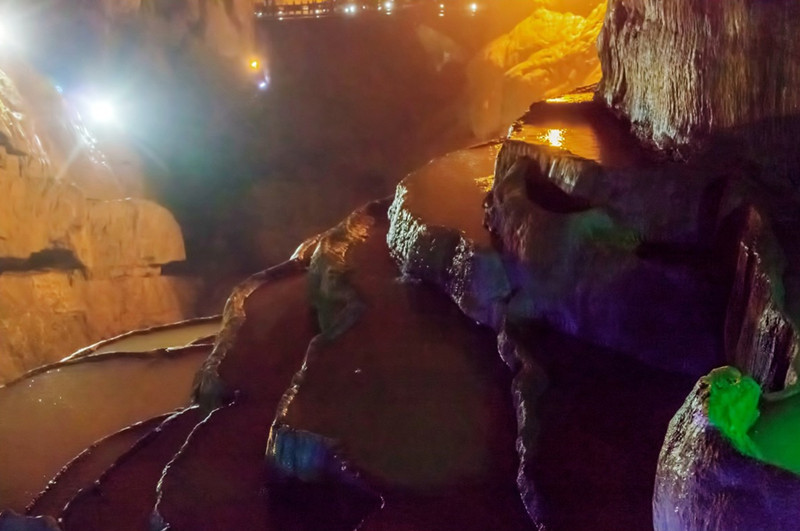
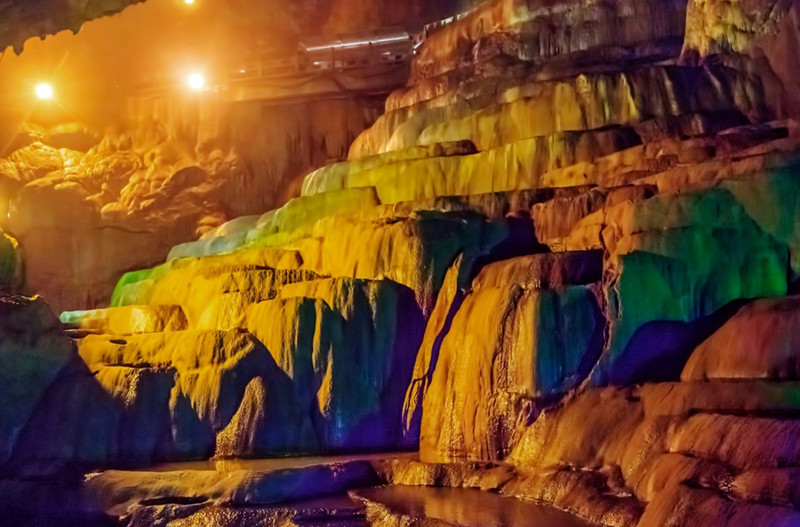
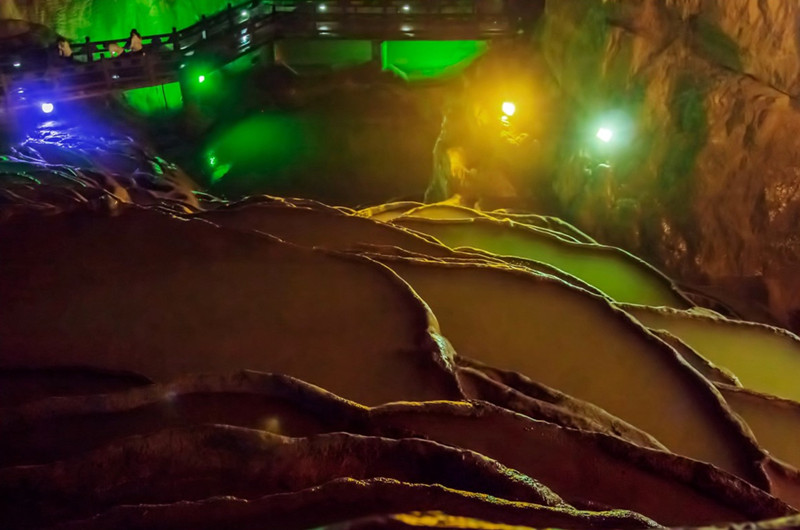
The Tomb of NiE is located in a gently sloping area between Taihua Temple (太华寺) and Longmen (龙门) in the Western Hills (西山) of Kunming (昆明), Yunnan Province (云南省). It covers an area of approximately 1,200 square meters and was relocated to this site in 1980.
The layout of the tomb is designed to resemble a moon lute, with the platform representing the body of the lute and the tomb positioned at the head. The tomb pit is constructed from stone slabs and has two levels, approximately 1 meter deep. The Tomb of NiE reflects the admiration and remembrance from people of various ethnicities and backgrounds in China and international friends, providing a beautiful space that merges with the surroundings for those who come to pay their respects.
On January 13, 1988, the Tomb of NiE was announced as a key national cultural relic protection unit by the State Council of the People’s Republic of China.
Location Information
- Geographical Location: Kunming (昆明), Yunnan Province (云南省)
- Established: 1980
- Area: Approximately 1,200 m²
- Protection Level: Third batch of national key cultural relic protection units
- Approving Authority: State Council of the People’s Republic of China
- Number: 3-0041-1-041
Historical Background
On October 1, 1937, NiE’s ashes were interred at the foot of the Western Hills in Kunming. His mother and family, along with cultural figures such as Chu Tunan (楚图南), Xu Jiarui (徐嘉瑞), Zheng Yizhai (郑一斋), and Lin Zhiyin (林志音), attended the burial ceremony. Xu Jiarui wrote the tomb’s name and inscription titled “The Tomb of the Epoch-Making Musician NiE.”
In February 1954, the Yunnan Provincial Cultural Bureau conducted a renovation of the tomb, adopting an inscription written by Guo Moruo (郭沫若) and changing the wording on the tombstone from “The Tomb of the Epoch-Making Music Composer NiE” to “The Tomb of the People’s Musician NiE.”
In March 1973, the Kunming Municipal Party Committee decided to relocate the tomb to a gently sloping area above the parking lot between Taihua Temple and Longmen. The relocation ceremony took place on May 13, 1980. The tomb underwent renovations and environmental improvements in 1985, 1992, and 2005.
Site Features
The design of the Tomb of NiE resembles a moon lute, with the platform acting as the lute’s body and the tomb positioned at the head. The tomb pit is built with stone slabs and features two levels, about 1 meter deep. The urn containing his ashes is placed on a circular base, with a three-tiered square stone platform underneath. On this platform rests a black stone tombstone. The front of the tombstone reads “The Tomb of the People’s Musician NiE,” while the back bears the epitaph written by Guo Moruo. In front of the tombstone is a high-relief white marble wreath of mountain camellias, inscribed with NiE’s birth and death years. The twenty-four stone steps leading to the tomb symbolize the twenty-four years of NiE’s life.
Cultural Relics
Statue of NiE
The statue of NiE is located in front of the tomb. It is a round sculpture made of white marble, standing 3.2 meters tall and weighing 3.7 tons, depicting him in a contemplative pose.
Screen Wall
The screen wall is situated behind the tomb of NiE, measuring 45 meters in length and slightly arched. The center features a high relief representing the heroic struggle of Chinese military and civilians during the war. The upper sides depict the Great Wall stretching across the sky, while the lower left showcases scenes of various Chinese ethnic groups singing the “March of the Volunteers” (《义勇军进行曲》).
Historical and Cultural Significance
Related Figures
- Burial Subject: NiE (聂耳)
- Biography: NiE (February 15, 1912 – July 17, 1935), originally named Nie Shouxin (聂守信), was born in Kunming (昆明), Yunnan Province (云南), and his ancestral home is in Yuxi (玉溪). In 1933, he joined the Communist Party of China (中国共产党). In the following three years, NiE composed several progressive songs, including “Spring Dawn at Cuihu” (《翠湖春晓》), “Graduation Song” (《毕业歌》), and “Pioneer” (《开路先锋》), earning him the title of “Pioneer of Chinese Revolutionary Music.” In February 1935, NiE composed the music for “March of the Volunteers” (《义勇军进行曲》) based on lyrics written by Tian Han (田汉) for the film “Children of the Storm” (《风云儿女》). During the lyric-writing process, Tian Han was imprisoned by Kuomintang agents. Hearing this, NiE voluntarily took on the task of composing the music and completed it after witnessing Japanese militarists advocating for “expanding China’s interests” while in Japan. Tragically, he drowned on July 17, 1935, at the age of 23 while swimming at the shore of the sea in Kanagawa Prefecture (神奈川县), Japan. In August 1935, his ashes and belongings were escorted back to Shanghai by his friends Zhang Tianxu (张天虚) and Zheng Ziping (郑子平). In 1936, NiE’s elder brother, Nie Xulun (聂叙伦), brought his ashes back to Kunming.
Literary Works
Epitaph of NiE Written by Guo Moruo (郭沫若) “Comrade NiE, the horn of the Chinese revolution, is also the drum of the people’s liberation. The music he composed for ‘March of the Volunteers’ has been selected as the national anthem. Those who hear its sound cannot help but feel a surge of patriotic thoughts, solemn and noble aspirations, and a united spirit. NiE, may your legacy endure forever alongside the nation! Comrade NiE, a member of the Communist Party of China, was born on February 14, 1912, in the beautiful Kunming, and tragically drowned on July 17, 1935, at the beach of Kanagawa, at the tender age of twenty-four. His death in an enemy country is an eternal regret, and the circumstances of his drowning remain unknown!”
Poem about NiE’s Tomb By Huang Zhaobi (黄兆碧) “The tomb stands serene beneath the everlasting sun,
Gentle breezes through the flowers and trees abound.
A lone hero’s spirit wanders without rest,
A young man’s heart, a sword of isolation, profound.
Questions of the cold depths, where tempests have blown,
Singing freely in verses long or short, profound.
Today the national anthem is sung with pride,
A glorious sound that resonates all around.”
Cultural Preservation
On January 13, 1988, the Tomb of NiE was listed as a third batch national key cultural relic protection unit by the State Council of the People’s Republic of China.
Travel Information
Location
The Tomb of NiE is located in a gently sloping area between Taihua Temple (太华寺) and Longmen (龙门) in the Western Hills of Kunming (昆明), Yunnan Province (云南省).
Transportation Information
Bus Routes:
- Take Metro Line 3 to Xishan Park Station and then transfer to the Western Hills scenic area shuttle bus to the final stop.
- Take buses 6, 51, or 94 to Gaoyao Station and then transfer to the Western Hills scenic area shuttle bus to the final stop.
Alternatively, take bus 183 in Kunming and get off at the Haigeng Tourist Cableway Station, then walk 4.0 kilometers to the tomb.
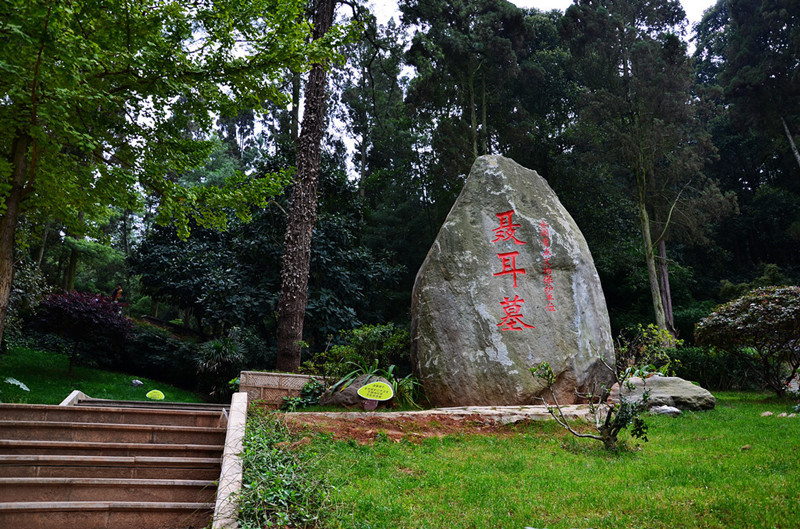
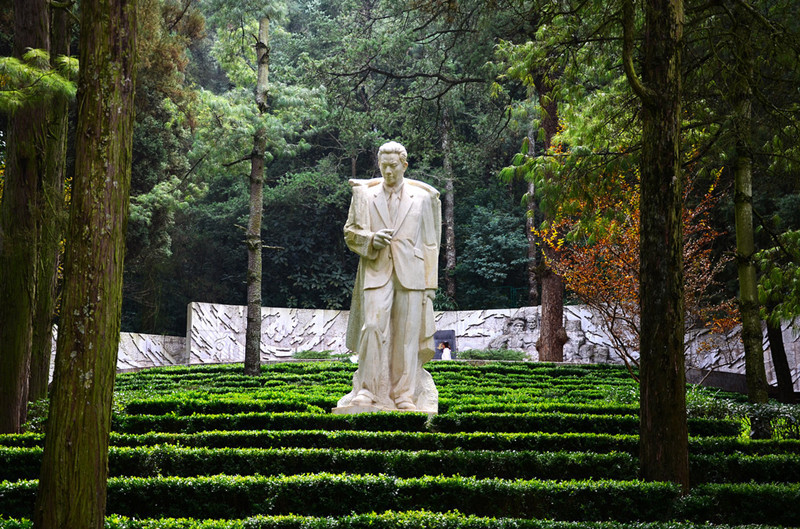

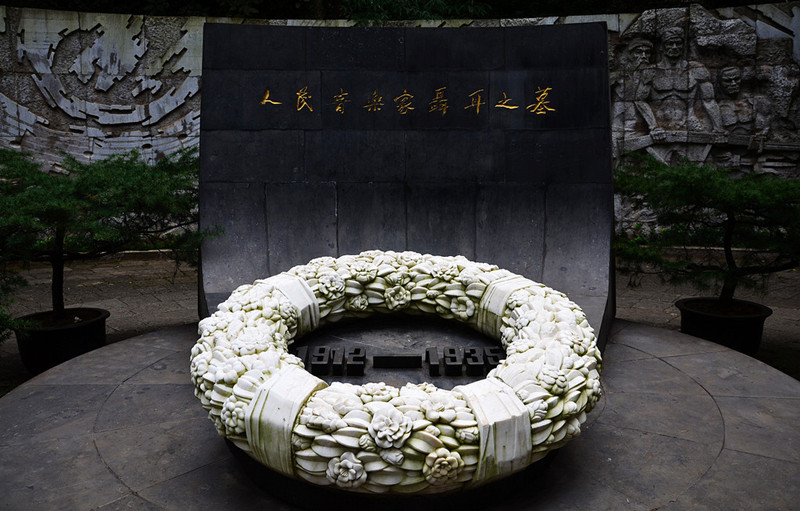
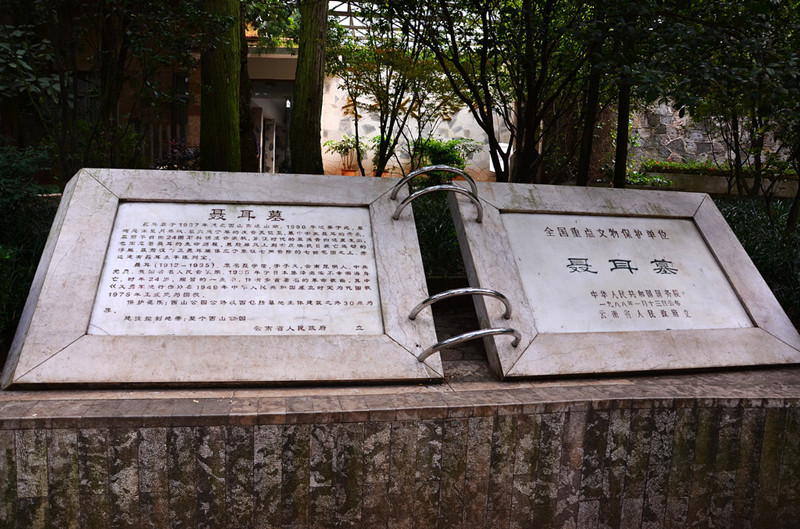
Overview of Diehongqiao Scenic Area
Diehongqiao Scenic Area (叠虹桥风景区) is located in Kunming (昆明), Yunnan Province (云南省). The area stretches along the Maitian River (麦田河) from north to south and comprises four main scenic regions: Yincui Gorge (荫翠峡), Baixiang Cave (白象洞), Xianrendong Cave (仙人洞), and Wolong Cave (卧龙洞). Additionally, it features several other caves and attractions, including Zhushi Cave (珠石洞), Bat Cave (蝙蝠洞), Xiaogou Cave (小沟洞), Pianzui Cave (偏嘴洞), Zhangkou Cave (张口洞), Daku Pit (大窟坑), Upper Big Cave (上大洞), Lower Big Cave (下大洞), and Fangjia Stone Cave (方家石洞), covering an area of approximately 5 square kilometers.
Key Information
- Chinese Name: 叠虹桥风景区
- Geographic Location: Kunming City, Yunnan Province
- Climate: Subtropical plateau monsoon climate
- Ticket Price: 35 RMB
- Area: 5 km²
- Famous Attractions: Yincui Gorge (荫翠峡), Baixiang Cave (白象洞), Xianrendong Cave (仙人洞), Wolong Cave (卧龙洞)
Major Attractions
Yincui Gorge
Yincui Gorge (荫翠峡) is nearly 1,000 meters long, with 600 meters navigable by boat. The Maitian River flowing through Yincui Gorge originates from Malong County (马龙县) in Qujing (曲靖) and features ancient trees on both banks that remain evergreen throughout the seasons. The crystal-clear waters slowly overflow from the ancient riverbed, creating a picturesque and serene environment. It is a perfect destination for couples and lovers, praised by experts as “the first serene gorge of the Pearl River source” and also known as “the first serene gorge in central Yunnan.”
Baixiang Cave
Baixiang Cave (白象洞) features a natural bridge that spans across the Maitian River. The cave has multiple platforms, and beneath them are ancient caves with various layers, leading down to an underground river. The overlapping natural bridges extend up to 200 meters, with heights exceeding 100 meters, showcasing a magnificent and imposing view.
Xianrendong Cave
Xianrendong Cave (仙人洞) is another notable feature of the scenic area, distinguished by its unique geological formations.
Wolong Cave
Wolong Cave (卧龙洞) adds to the charm of the area, offering visitors a glimpse of its stunning natural beauty.
Other Caves
The scenic area also includes numerous other caves, such as Zhushi Cave (珠石洞), Bat Cave (蝙蝠洞), Xiaogou Cave (小沟洞), Pianzui Cave (偏嘴洞), Zhangkou Cave (张口洞), Daku Pit (大窟坑), Upper Big Cave (上大洞), Lower Big Cave (下大洞), and Fangjia Stone Cave (方家石洞).
Shentian
Shentian (神田), known as the “edge stone dam” in geology, is characterized by layers of rock that create shimmering waves, resembling terraced fields. This large Shentian is exceptionally unique, with the largest section spanning over 100 square meters and reaching depths of over 10 meters. It is formed by the gradual accumulation of minerals from the flowing water, creating a spectacular sight. After thorough investigations by domestic and international cave experts, it is recognized that the Shentian in the Jiuxiang Diehongqiao Scenic Area is the largest edge stone lake group among the more than 2,000 open karst cave scenic areas worldwide.
Lion Hall
Lion Hall (雄狮大厅) is an elliptical natural hall with a width and length of over 200 meters. It features a massive cave entrance, where a natural lion shape can be seen gazing upwards, giving the hall its name. Inside, there is a natural stage and audience area that can accommodate thousands of people for rest, entertainment, and performances.
Cimu Falls
Cimu Falls (雌雄瀑) features water cascading from two caves of different heights. The falls have a height of 30 meters, plunging into a clear pool that is over 10 meters deep. The roar of the water and the flying droplets create a breathtaking scene, located more than 100 meters underground.
Transportation
Visitors can reach the scenic area by taxi from Kunming Airport (昆明机场) or the train station (火车站), with round-trip fares ranging from 200 to 300 RMB. Alternatively, taking a bus from Kunming Train Station takes approximately 2 hours, with a fare of 15 RMB.
Minibuses are available near Kunming Train Station or Chayuan Hotel (茶苑宾馆) directly to Jiuxiang Scenic Area, with round-trip tickets priced between 30 and 40 RMB per person. From Kunming North Bus Station (昆明汽车北站), Juhua Village Bus Station (菊花村汽车站), and Eastern Bus Station (东部汽车站), minibuses to Yiliang County are available for about 8 RMB. After reaching Yiliang, visitors can transfer to another bus to Jiuxiang for an additional 6 RMB fare.
Accommodation and Dining
Within the scenic area, there are accommodations such as Jiuxiang Hotel (九乡宾馆) and Fulin Mountain Villa (富林山庄), both offering charming and elegant settings that blend harmoniously with the surrounding landscape. Standard room rates start at 80 RMB per night, while suites begin at 120 RMB.
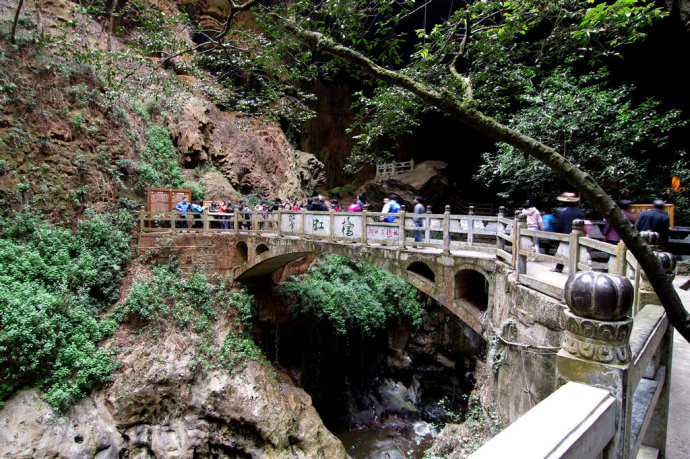
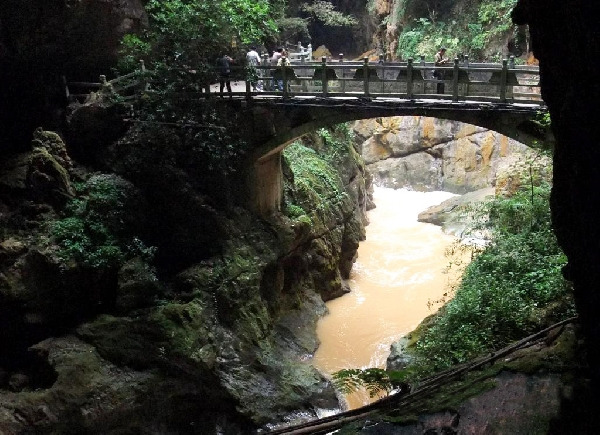
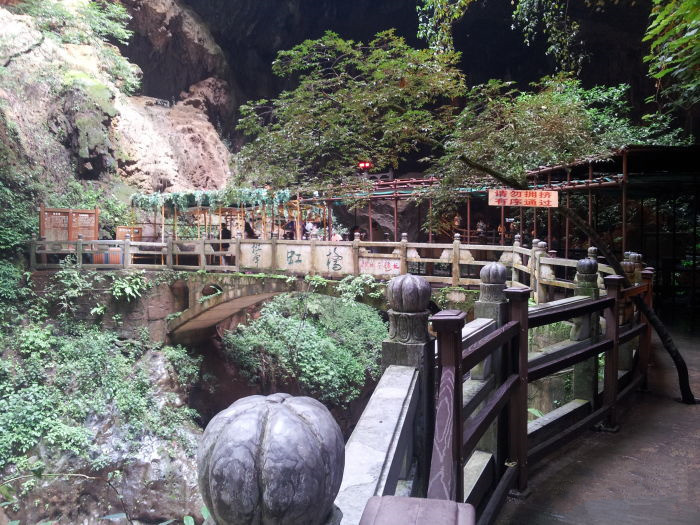
Overview of Mingyuehu Lake Scenic Area
Mingyuehu Lake (明月湖) is a scenic area located in Yiliang County (宜良县), Kunming (昆明). It is situated approximately 10 kilometers from the Diehong Bridge (叠虹桥) scenic area and lies on the Nanpan River (南盘江), downstream of the Maitian River (麦田河). Mingyuehu Lake is currently being developed as part of a key water conservancy project in Yunnan Province, known as the Chaishitan Reservoir (柴石滩水库).
Key Information
- Chinese Name: 明月湖景区
- Geographic Location: Jiuxiang Scenic Area (九乡风景区), Yiliang County, Kunming
- Opening Hours:
- Ticket Price: Free
- Nearby Attractions: Diehong Bridge Scenic Area (叠虹桥景区)
Transportation
- By Taxi: Visitors can take a taxi from Kunming Airport (昆明机场) or the train station (火车站) to the scenic area, with round-trip fares ranging from 200 to 300 RMB.
- By Bus: From Kunming Train Station, it takes about 2 hours to reach the scenic area by bus, with a fare of approximately 15 RMB.
- Minibus Services: Visitors can take a minibus directly to Jiuxiang Scenic Area from Kunming Train Station or the Chayuan Hotel (茶苑宾馆), with a round-trip ticket price of 30 to 40 RMB per person.
- Long-Distance Buses: At Kunming North Bus Station (昆明汽车北站), Juhua Village Bus Station (菊花村汽车站), and Eastern Bus Station (东部汽车站), minibuses to Yiliang County are available, costing around 8 RMB. Upon arrival in Yiliang, visitors can transfer to a bus to Jiuxiang for an additional 6 RMB fare.
Accommodation and Dining
Within the scenic area, there are accommodations such as Jiuxiang Hotel (九乡宾馆) and Fulin Mountain Villa (富林山庄), which are both quaint and elegant, blending seamlessly with the surrounding landscape. Standard room rates start at 80 RMB per night, while suites begin at 120 RMB.
The dining options within Jiuxiang Scenic Area predominantly feature wild mountain plants, varying with the seasons. In spring, visitors can taste dishes made with pear blossoms (棠梨花), sand pine tips (沙松尖), bitter thorn flowers (苦刺花), and dragon claw vegetables (龙爪菜).
During the summer and autumn, a variety of wild mushrooms, including chicken truffles (鸡枞), dried mushrooms (干巴菌), beef liver mushrooms (牛肝菌), and chicken oil mushrooms (鸡油菌), are available—over 20 different types in total.
In winter, guests can enjoy rural-style dishes such as cured meat (腌肉), roasted meat (烤肉), smoked meat (烟熏肉), and beef jerky (牛干巴), along with the ever-popular Yiliang roast duck (宜良烤鸭).
Shopping
Visitors can also purchase unique embroidered items from Jiuxiang Scenic Area, featuring designs such as Yincui Gorge (荫翠峡), Shentian (神田), and the dual waterfalls (雌雄双瀑). These embroideries, framed in red wood, exude a charming rustic elegance, with prices typically ranging from 600 to 800 RMB depending on the size.
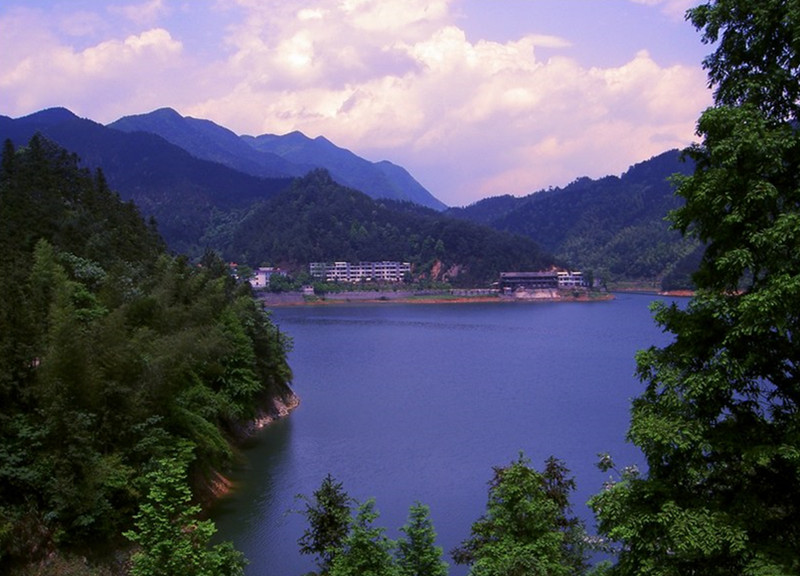

Overview of Liulin Beach
Liulin Beach (柳林沙滩) is a scenic spot located in Chenggong District (呈贡区) along the eastern shore of Dianchi Lake (滇池) in Kunming (昆明). This area is known for its abundance of fish and rice, symbolizing prosperity.
At the entrance to Dou Nan (斗南) facing the lake, specifically in the area around Cailong Village (采龙村), visitors can find a 5-kilometer-long stretch of soft, delicate sandy beach. The clear and gentle waves of the lake, combined with a broad expanse of lush green willow trees, create a natural barrier along the eastern side of the beach. The lake reflects the greenery of the willows, making the scene both beautiful and enchanting. From across the lake, one can admire the peaks of the Western Hills (西山), which appear like a reclining fairy above the turquoise waters. This expansive and sunny stretch of sand at Liulin is regarded as the largest and most picturesque bathing area on Dianchi Lake.
Location and Accessibility
- Chinese Name: 柳林沙滩
- Geographic Location: Chenggong County (呈贡县) on the eastern shore of Dianchi Lake
- Opening Hours: Open year-round, from Monday to Sunday, 00:00 – 24:00
- Ticket Price: Free of charge
- Famous Attraction: Liulin (柳林)
Detailed Description of the Scenic Area
Chenggong County, located on the eastern bank of Dianchi Lake, is a rich agricultural area known for its bountiful fish and rice production. The road leading from the northwest of the county town connects to Dou Nan Village, which further leads to the picturesque Liulin Beach. The beach itself stretches gracefully along the lakeshore, providing a serene atmosphere that attracts many visitors.
Flower Market Near Dou Nan Village
Adjacent to Dou Nan Village is a large expanse of farmland where various flowers are cultivated. This area boasts the largest wholesale market for fresh-cut flowers in the country, where large quantities of blooms are sold daily to markets both within and outside the province, as well as to international destinations.
Transportation Tips
Visitors can take Bus No. 12 from Kunming (昆明) to Chenggong County. From there, they can switch to a minibus heading to the northwest of the county town, reaching Dou Nan Village. Traveling west from Dou Nan Village will lead directly to Liulin Beach.
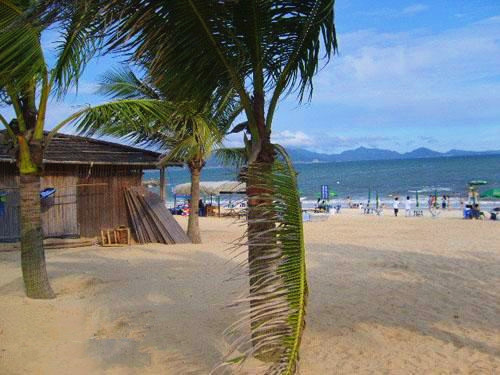
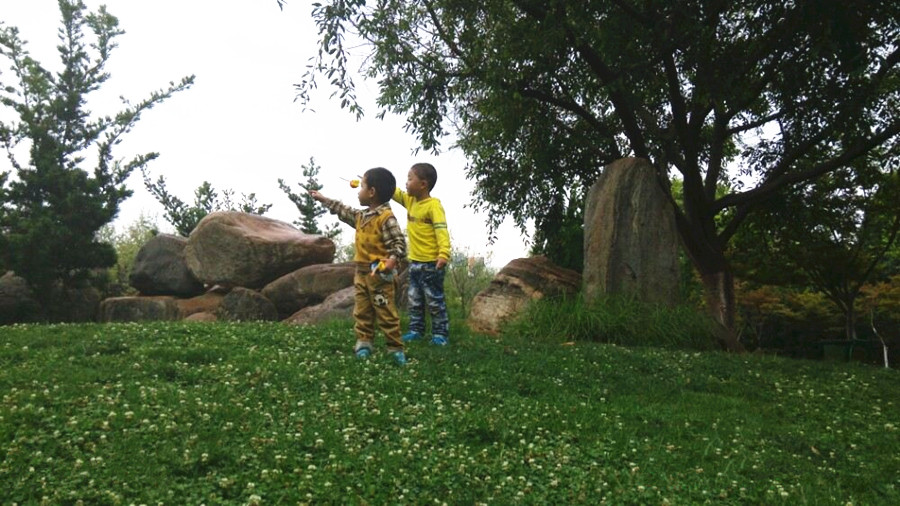
Overview of the Achang Ethnic Minority
The Achang ethnic minority (阿昌族) is a unique group in Yunnan Province (云南省), primarily distributed in Dehong Prefecture (德宏州) across counties such as Longchuan (陇川), Lianghe (梁河), and Luxi (潞西). With a population of approximately 39,000, many Achang people adhere to primitive religions that worship ancestors and spirits, while some areas also practice Southern Theravada Buddhism. The Achang are descendants of the Di and Qiang ethnic groups, having entered the Nu River (怒江) basin in northwest Yunnan as early as the 2nd century AD. By the 13th century, some settled in Husa Bazi (户撒坝子) in Longchuan County, while others later moved to Lianghe.
Achang craftsmen are renowned for producing “Husa knives” (户撒刀), which include long knives, short knives, and concealed knives, characterized by their exquisite beauty and high quality. These products are sold not only within Yunnan but also in neighboring regions such as Sichuan and Tibet, as well as countries like Myanmar (缅甸), India (印度), and Pakistan (巴基斯坦).
Architectural Features of the Achang Village
The Achang village (阿昌寨) within the Village of Achang Ethnic Minority in Yunnan Ethnic Villages features a courtyard-style main building that harmoniously connects with structures like the village gate and workshops. The buildings are adorned with blue tiles, brick walls, and stone foundations, showcasing distinctive architectural characteristics. The main structure, facing west, is a single-story building known for its unique design that emphasizes verticality.
Cultural Practices and Hospitality
The Achang people are known for their warmth and hospitality, placing great importance on respecting the elderly and caring for the young. When guests visit, hosts are expected to offer fine wine and tea. Dining etiquette is significant; guests may politely decline a prime seat if they are younger in age. When offering toasts or serving tea, it is considered impolite to accept without showing deference.
There are customs surrounding meal invitations; guests are expected to accept regardless of whether they drink alcohol or tea. During meal invitations, it is customary to receive food with both hands, showing respect, regardless of one’s hunger level.
Major Religious and Cultural Festivals
The Achang people celebrate several significant religious festivals, including:
- Jinwa (进洼)
- Chuwa (出洼)
- Bai Chai (白柴)
- Water Festival (水节)
In addition to these religious occasions, major festivals that are similar to those celebrated by the Dai people (傣族) include traditional market days, the annual “Dengwo Luo” (蹬窝罗), street fairs, the harvest festival (尝新节), and the Water Splashing Festival (泼水节).
Traditional Crafts and Heritage
The Achang people from Husa possess exceptional skills in blacksmithing and knife-making, creating durable iron tools. Their knives—long knives, pointed knives, cleavers, kitchen knives, scissors, and sickles—are known for their sharpness and aesthetic appeal. The “Husa knife” is famous throughout the region and is highly valued by the Dai, Han, Jingpo, and De’ang ethnic groups. The knife-making technique of the Achang has been listed as a national intangible cultural heritage.
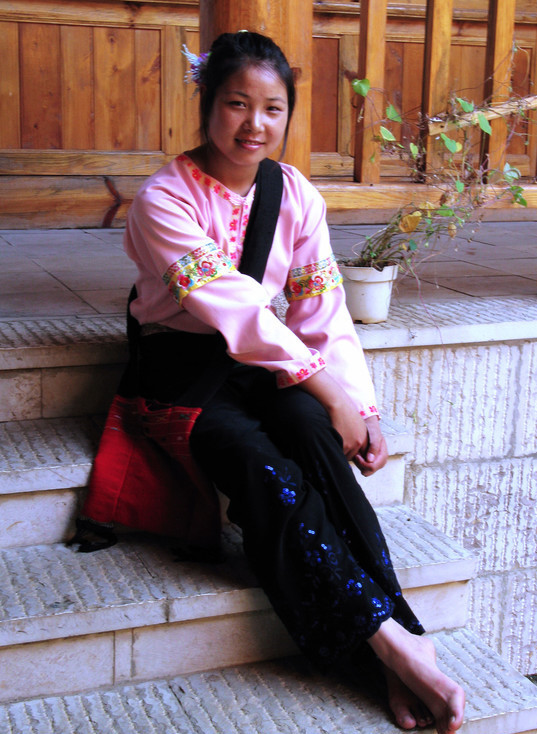
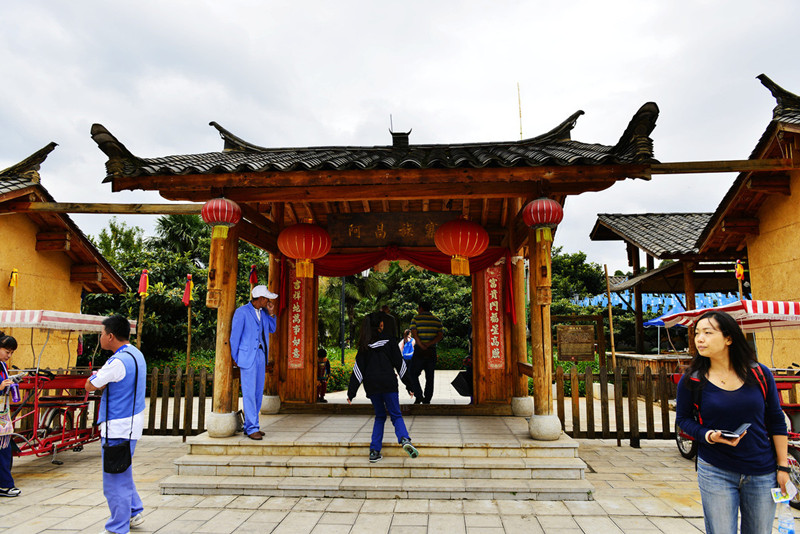
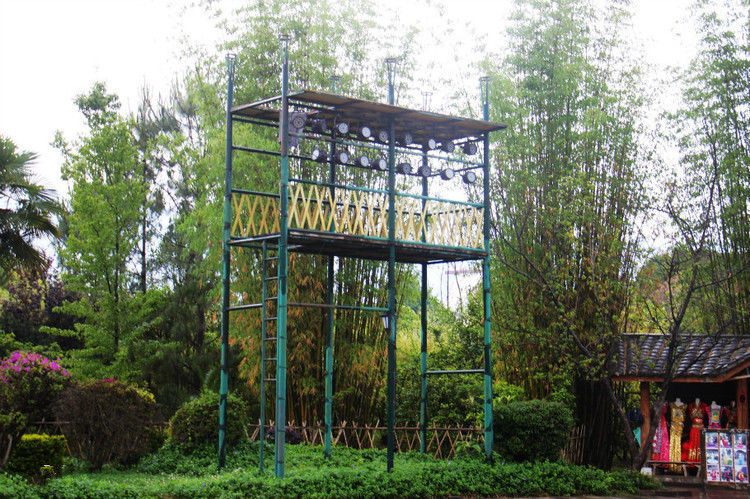
Overview of the Yao Ethnic Minority
Yunnan Province (云南省) has a Yao ethnic minority (瑶族) population of approximately 220,000, making it the third largest concentration of Yao people in China, following Hunan (湖南) and Guangxi (广西). The Yao people are mainly distributed in counties such as Funing (富宁), Jinping (金平), Hekou (河口), Malipo (麻栗坡), Guannan (广南), and Mengla (勐腊).
The Yao ethnic group is composed of four branches: the Lanjing Yao (蓝靛瑶), Guoshan Yao (过山瑶), Shanyao (山瑶), and Jingdong Yao (景东瑶). There are different theories regarding the origin of the Yao people. One theory suggests that they descended from the ancient ethnic group “San Miao” (三苗) from the middle and lower reaches of the Yangtze River (长江). Another theory posits that they originated from one branch of the ancient “Baiyue” (百越). The large-scale migration of the Yao people into Yunnan began during the Ming and Qing dynasties.
Both the Lanjing Yao and Guoshan Yao follow a belief system that emphasizes home practice of Yao Taoism (瑶传道教). This includes the folk custom of “dujie” (度戒), which serves as both a coming-of-age ceremony for Yao boys and an initiation ritual into Yao Taoism.
Traditional Festivals
The Yao people celebrate many traditional festivals, with small festivals occurring nearly every month, varying significantly across different regions. One of the grand traditional festivals is the “Jumping Pan Wang” (跳盘王), which commemorates their ancestor Pan Wang (盘王). Since 1984, the date for the Pan Wang Festival has been unified nationwide to the 16th day of the 10th month in the lunar calendar.
Architectural Features of the Yao Village
The Yao village in the Village of Yao Ethnic Minority in Yunnan Ethnic Villages (云南民族村–瑶族村寨) is composed of a variety of architectural styles, including stilted houses (吊角楼), single-story dwellings (平房民居), Taoist temples (道观), granaries (粮仓), and village gates (寨门). The layout is well-organized and reflects the integration of cultural elements typical of Yao architecture.
Music and Dance
Yao music, dance, and folk songs have their origins in labor and religion. Some of the most famous dances include the Long Drum Dance (长鼓舞) and the Bronze Drum Dance (铜鼓舞), which are large-scale performances to honor Pan Wang and Muluo (密洛陀). Additionally, there are numerous popular folk dances, such as the Lion Dance (狮舞), Grass Dragon Dance (草龙舞), Flower Stick Dance (花棍舞), Incense Offering Dance (上香舞), and Master Seeking Dance (求师舞), among others.
Festivals and Ceremonies
Significant festivals include:
- Pan Wang Festival (盘王节)
- Spring Festival (春节)
- Danu Festival (达努节)
- Zhongyuan Festival (中元节)
- She Wang Festival (社王节)
- Qingming Festival (清明节)
The Pan Wang Festival, commonly referred to as “Jumping Pan Wang” (跳盘王) or “Returning Pan Wang’s Wish” (还盘王愿), occurs every three to five years on the 16th day of the 10th month in the lunar calendar. The main ceremonies typically involve a master shaman (师公) performing rituals, singing Pan Wang songs, dancing the Long Drum Dance, and praying to Pan Wang (盘瓠) for blessings and protection. This festival is particularly significant for the Yao people who identify themselves as “Mian Zhi” (勉支) and is celebrated with great solemnity.
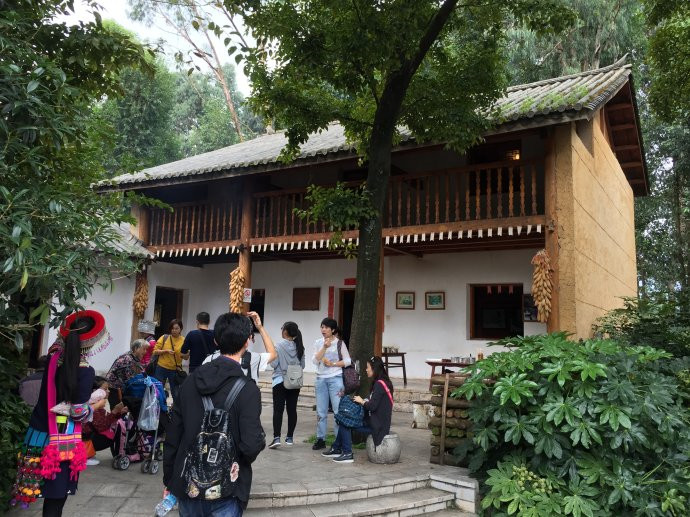
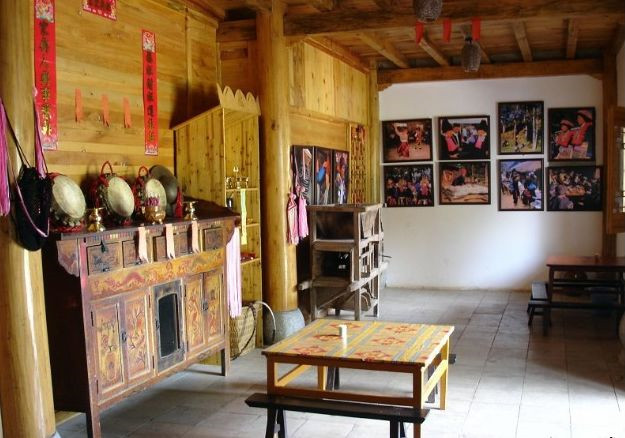
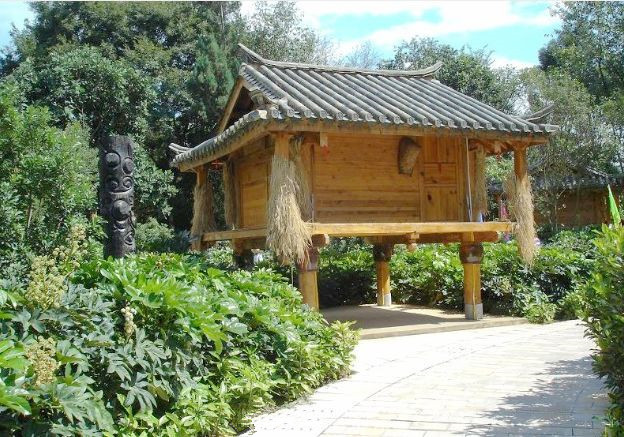
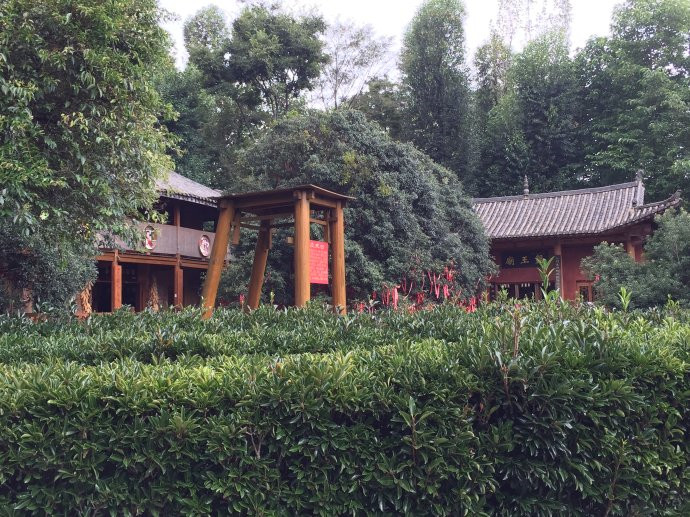
Overview of the Hui Ethnic Minority
The Hui ethnic minority (回族) in Yunnan Province (云南省) has a population of nearly 700,000. They are distributed across almost every county (市、区) in the province, characterized by a pattern of “large dispersion with small concentration” and living in clusters around mosques (清真寺). In urban areas, Hui people tend to form neighborhoods, while in rural settings, they establish villages. Their primary residence areas include transportation lines, flatland regions, river valleys, and towns.
The ancestors of the Hui people migrated to Yunnan from various regions, including Arabia (阿拉伯), Central Asia (中亚), West Asia (西亚), and parts of China’s Central Plains (中原) and Northwest (西北) during several historical periods. The Hui people strictly adhere to the teachings and regulations of Islam, following the Quran (《古兰经》) and the Hadith (圣训). They practice the Five Pillars of Islam (五大功修) and have developed their unique customs and traditions.
Each year, the Hui people celebrate three significant festivals:
- Eid al-Fitr (开斋节)
- Eid al-Adha (古尔邦节)
- Mawlid (圣纪节)
These festivals are based on the Islamic lunar calendar.
Architectural Features of the Hui Village
The Hui village in the Village of Hui Ethnic Minority in Yunnan Ethnic Villages (云南民族村–回族村寨) is characterized by its unique architectural ensemble. It primarily consists of:
- Residential buildings (民居楼)
- Mosques (清真寺)
- Various blocks of architecture
The area is beautifully adorned with gardens and landscaping, which collectively showcase the architectural layout and characteristics of Hui residences in Yunnan.
The architectural style of the Hui people reflects their cultural identity and traditions, creating a harmonious blend of functional living spaces and aesthetic beauty. The community layout is designed to foster social interactions and a sense of belonging among residents. The incorporation of gardens and greenery enhances the village’s environment, promoting a peaceful and inviting atmosphere.
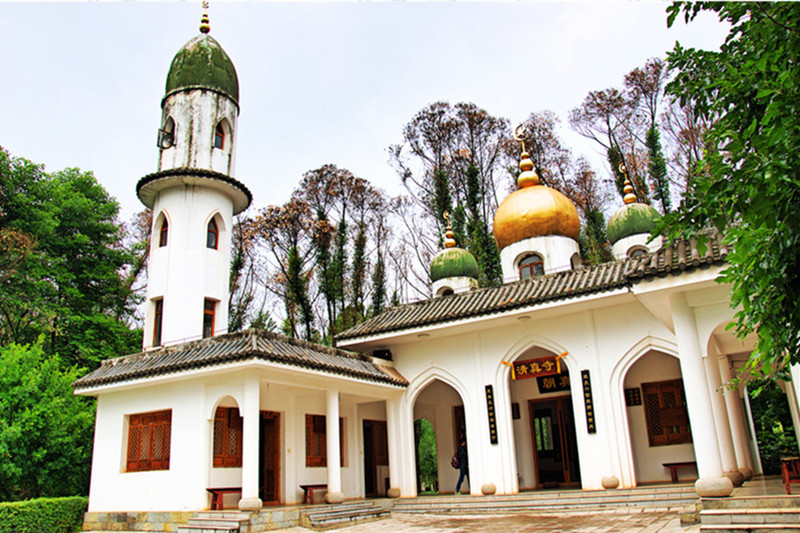

Overview of the Manchu Ethnic Minority
The Manchu ethnic minority (满族) in Yunnan Province (云南省) has a population of approximately 14,000. They are mainly distributed in cities such as Kunming (昆明), Baoshan (保山), Simao (思茅), Qujing (曲靖), and Chuxiong (楚雄). The Manchu people have a significant presence in urban areas, with many engaged in professions related to engineering, administration, culture, and healthcare.
Historical Background
The Manchu migration to Yunnan began in the early Qing Dynasty (清朝). In the 20th year of the Kangxi Emperor’s reign (康熙二十年, 1681), Prince Zhangtai (贝子彰泰) led 100,000 soldiers from both the Manchu and Han ethnic groups to conquer Kunming. It is said that “some of the Eight Banners’ servants did not return with the army, but instead hid in Yunnan (滇境).”
Following this, an increasing number of Manchu people migrated to Yunnan, either accompanying officials, engaging in commerce, or arriving during the War of Resistance against Japan. Many of these Manchu people settled in Kunming. Areas like Ruan’an Street (如安街) in Kunming were once populated by the Manchu, which was historically referred to as “Qiren Street” (旗人街).
Cuisine
The Manchu cuisine is rich and distinctive, often described as “Manchu-style Han dishes” (满点汉菜). One of the most representative dishes that embodies the fusion of Manchu and Han culinary culture is the “Manchu-Han Full Banquet” (满汉全席), which features over 100 dishes that maintain the unique characteristics of Manchu food in terms of ingredients, preparation, and eating styles.
Festivals
Many of the festivals celebrated by the Manchu people are similar to those of the Han ethnic group. The main festivals include:
- Spring Festival (春节)
- Lantern Festival (元宵节)
- Dragon Head Raising Day (二月二)
- Duanwu Festival (端午节)
- Mid-Autumn Festival (中秋节)
During these festivals, traditional sports activities such as pearl ball games and horse racing are commonly held.
Architectural Features
The Village of Manchu Ethnic Minority in Yunnan Ethnic Villages (云南民族村–满族寨) draws inspiration from the traditional courtyard structures of the Manchu people from Benxi (本溪) in Northeast China. At the same time, it incorporates numerous elements of the Siheyuan (四合院) architectural style typical of Kunming. This unique blend creates a perfect combination of the architectural styles from both regions, showcasing the cultural heritage of the Manchu people.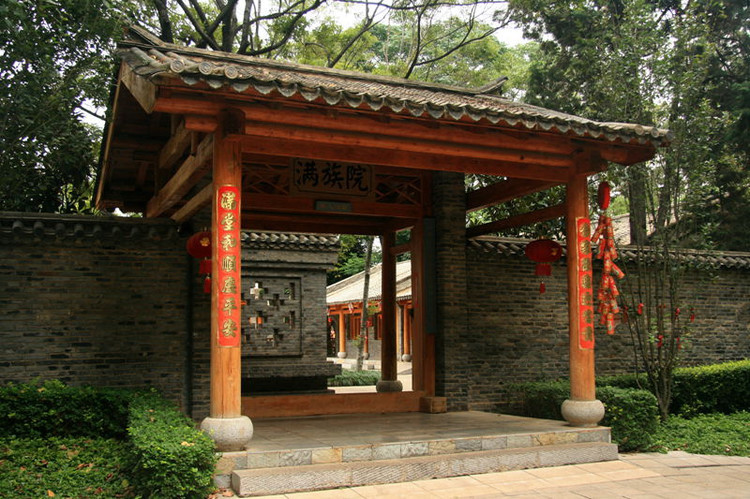
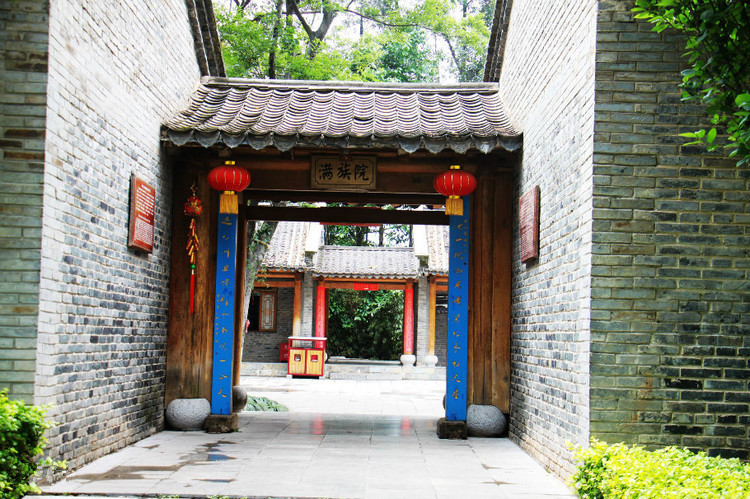
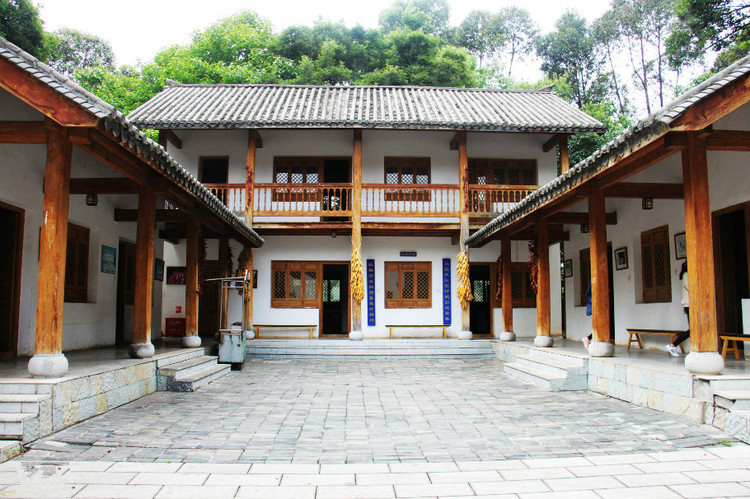
Introduction to the Pumi Ethnic Minority
The Pumi ethnic minority (普米族) is a unique group in Yunnan Province (云南省), with a population of approximately 42,000. They are descendants of the ancient Di-Qiang (氐羌) tribes and primarily engage in agriculture and animal husbandry. The Pumi people mainly reside in the northwestern part of Yunnan, particularly in the counties of Lanping (兰坪), Ninglang (宁蒗), Lijiang (丽江), Weixi (维西), and Yongsheng (永胜).
The Pumi people have a rich cultural heritage, with flourishing folk arts, including exquisite singing and dancing. A significant ceremony, known as the “Cheng Ding Li” (成丁礼), is held for children when they reach the age of 13 to mark their coming of age. They possess their own language and also use Chinese (汉文) for communication. The Pumi people follow Tibetan Buddhism, and their lamas and shamans (韩规) often compose scriptures in Tibetan.
Cultural Festivals and Traditions
The main traditional festivals of the Pumi ethnic minority include the Spring Festival (大过年), the Great Fifteenth Festival (大十五节), the Rock Cave Festival (绕岩洞), the Mountain Pilgrimage Festival (转山会), and the Tasting New Rice Festival (尝新节).
Among these, the Spring Festival (大过年) is the most important and grandest celebration, typically lasting three days to half a month. In Ninglang, the New Year is celebrated on the seventh day of the twelfth lunar month, while in Lanping and Weixi, the Spring Festival is celebrated during the first month of the lunar calendar.
The Great Fifteenth Festival (大十五节) is a traditional festival for the Pumi people in Ninglang, celebrated on the fourteenth day of the twelfth lunar month. During this time, people dress in bright new clothes, camp in the mountains, and hold bonfire parties. The following day, they pray for blessings around the “Mani pile” (玛尼堆), where young men and women joyfully sing, dance, and flirt with one another.
Architectural Features of the Pumi Ethnic Village
The Village of Pumi Ethnic Minority (普米族寨) in Yunnan Ethnic Village features typical “Duomu” (垛木) double-decker wooden houses and sloping-roofed flat houses. The village is arranged in a courtyard style, reflecting traditional folk architectural methods.
A local beverage, known as “Suli Ma” (酥里玛酒), is brewed using barley and traditional methods, earning the reputation of “local beer.” The western part of the village showcases the charming atmosphere of the “Suli Ma workshop,” where this unique beverage is produced.
The Village of Pumi Ethnic Minority in Yunnan Ethnic Villages offers a vivid glimpse into the rich cultural heritage and traditions of the Pumi people. Through their festivals, artistic expressions, and distinctive architectural styles, the Pumi ethnic minority continues to thrive and preserve their unique identity in the vibrant tapestry of Yunnan Province.
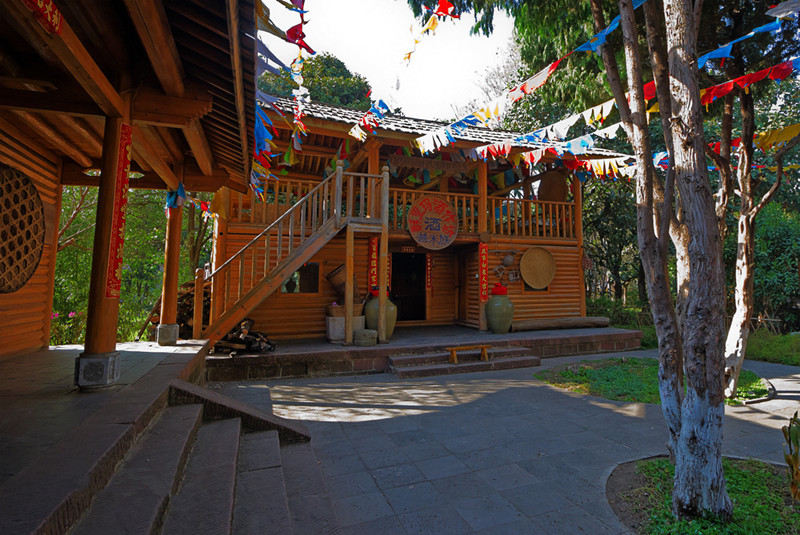
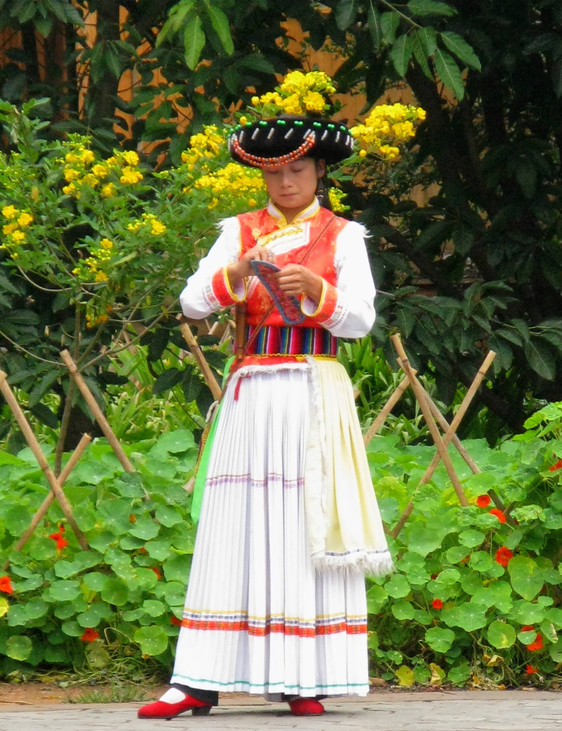
Location:
Introduction to the Lisu Ethnic Minority
The Lisu ethnic minority (傈僳族) is a unique group in Yunnan Province (云南省), with a population of nearly 670,000. They primarily engage in agriculture and mainly inhabit the Nujiang (怒江) and Weixi Lisu Autonomous Prefecture (维西傈僳族自治州), particularly in the famous “Three Parallel Rivers” area. Additionally, there are communities in Lijiang (丽江), Diqing (迪庆), Dali (大理), and Baoshan (保山) prefectures and cities.
The Lisu people originated from the ancient Di-Qiang (氐羌) tribes and were historically known as “Bo” (僰) and “Pu” (濮) after migrating south during the Qin (秦) and Han (汉) dynasties. Their folk beliefs are rooted in animism, and they possess their own language and script. The Lisu culture is rich in folk songs and dances, showcasing their vibrant heritage.
Cultural Festivals and Traditions
The Lisu people refer to their annual New Year festival as “Kuo Shi” (阔时), which typically occurs between the fifth day of the twelfth lunar month and the tenth day of the first lunar month, coinciding with the blooming season of cherry blossoms. The “Kuo Shi Festival” (阔时节) has now been established as a communal ethnic festival celebrated by the Lisu people in Nujiang Prefecture (怒江州), occurring on December 20 each year.
Additionally, the Lisu community in Dehong (德宏) and Tengchong (腾冲) celebrates the “Knife Pole Festival” (刀杆节) on the seventeenth day of the second lunar month. These festivals are significant cultural events, reflecting the Lisu people’s traditions and community spirit.
Architectural Features of the Lisu Ethnic Village
The Village of Lisu Ethnic Minority (傈僳族寨) in Yunnan Ethnic Village is characterized by its typical “Qianjiao Luodi” (千脚落地) wooden house architecture. This style reflects the unique morphological features of the Lisu people’s terraced environment, showcasing their aesthetic preferences and open-minded lifestyle. The layout of the village exhibits a harmonious blend of traditional architectural design with the natural landscape, offering visitors a glimpse into the cultural identity and daily life of the Lisu ethnic minority.
The Village of Lisu Ethnic Minority in Yunnan Ethnic Villages provides a rich cultural experience, allowing visitors to explore the traditions, festivals, and architectural styles of the Lisu people. Through their unique practices and vibrant community life, the Lisu ethnic minority continues to thrive, preserving their heritage and sharing it with the world.
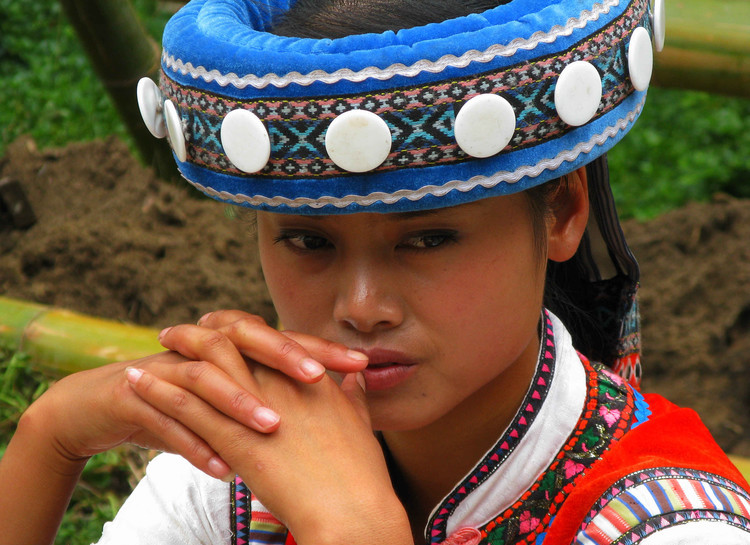
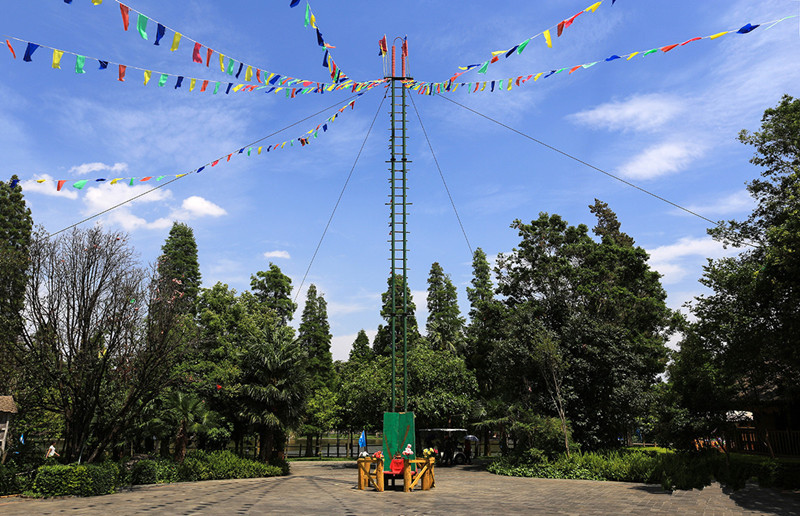
Introduction to the Buyi Ethnic Minority (布依族)
The Buyi ethnic minority (布依族) in Yunnan Province (云南省) has a population of nearly 59,000 people, primarily residing in more than ten counties within the Qujing (曲靖), Wenshan (文山), and Honghe (红河) prefectures. The origins of the Buyi people trace back to the ancient “Baiyue” (百越), and they have been historically referred to by names such as “Xieman” (谢蛮) and “Zhongjia” (仲家), being a branch of the Luoyue people (骆越) within the Baiyue ethnic group. They are an agricultural society with a lunar calendar, rich natural resources, and favorable environmental conditions. The Buyi language exists alongside the use of Chinese characters (汉文), and their literature is flourishing. Their folk beliefs revolve around animism and polytheism, with a representative festival being the Sacrifice to the Soil God (祭社神节) celebrated on the sixth day of the sixth lunar month.
The Buyi people celebrate many traditional festivals, including:
- March 3 (三月三)
- April 8 (四月八)
- June 6 (六月六): This is a common festival for the Buyi people.
Buyi arts and crafts are well-known, including techniques such as batik (蜡染), embroidery (刺绣), brocade weaving (织锦), bamboo weaving (竹编), dyeing (织染), pottery (陶瓷), and carving (雕刻).
Architectural Features of the Buyi Ethnic Village (布依族寨建筑特点)
The Village of Buyi Ethnic Minority (布依族寨) in Yunnan Ethnic Village is situated beside water and consists of two residential buildings that adhere to traditional folk construction methods. This design achieves a perfect combination of the Qionglong (邛笼) architectural style and the wooden house (板屋) building technique. The village features pavilions and corridors by the water, with winding paths that lead to serene spots, showcasing a blend of folk residential charm and innovative garden landscapes, making it highly representative of Buyi architectural aesthetics.
The Village of Buyi Ethnic Minority in Yunnan Ethnic Villages offers visitors a unique opportunity to immerse themselves in the rich culture and traditions of the Buyi people. Through their vibrant festivals, exquisite craftsmanship, and distinctive architectural style, visitors can gain valuable insights into the lives and heritage of the Buyi ethnic minority.
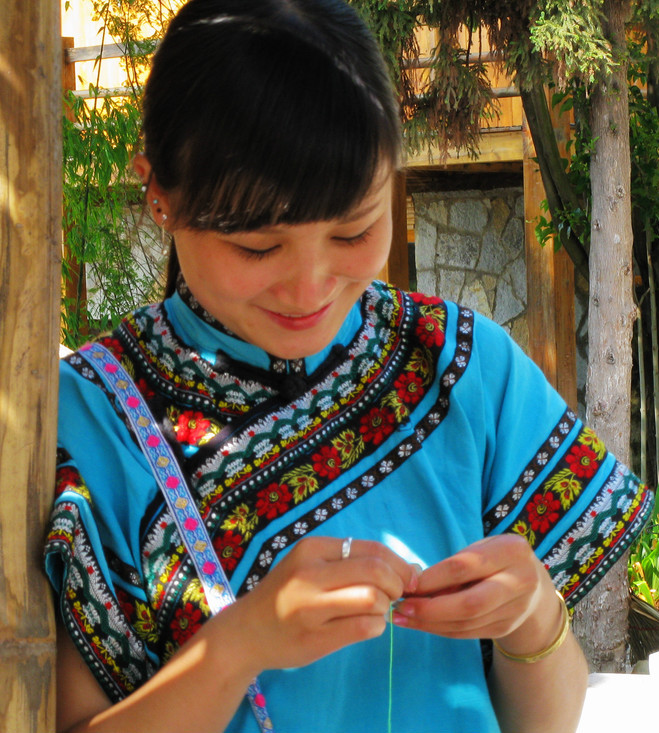
Magical Stone Terraced Fields of Jiuxiang Caves in Kunming
Chinese Name: 宜良九乡溶洞神田 English Name: Magical Stone Terraced Fields of Jiuxiang Caves in Kunming The Jiuxiang Caves (九乡洞), located in Kunming (昆明), are surrounded by extensive carbonate rock formations...
Tomb of NiE in Western Hills, Kunming
The Tomb of NiE is located in a gently sloping area between Taihua Temple (太华寺) and Longmen (龙门) in the Western Hills (西山) of Kunming (昆明), Yunnan Province (云南省)....
Diehongqiao Scenic Area in Yiliang County, Kunming
Overview of Diehongqiao Scenic Area Diehongqiao Scenic Area (叠虹桥风景区) is located in Kunming (昆明), Yunnan Province (云南省). The area stretches along the Maitian River (麦田河) from north to south...
Mingyuehu Lake in Yiliang County, Kunming
Overview of Mingyuehu Lake Scenic Area Mingyuehu Lake (明月湖) is a scenic area located in Yiliang County (宜良县), Kunming (昆明). It is situated approximately 10 kilometers from the Diehong...
Liulin Beach of Dianchi Lake in Kunming
Overview of Liulin Beach Liulin Beach (柳林沙滩) is a scenic spot located in Chenggong District (呈贡区) along the eastern shore of Dianchi Lake (滇池) in Kunming (昆明). This area...
Village of Achang Ethnic Minority in Yunnan Ethnic Villages, Kunming
Overview of the Achang Ethnic Minority The Achang ethnic minority (阿昌族) is a unique group in Yunnan Province (云南省), primarily distributed in Dehong Prefecture (德宏州) across counties such as...
Village of Yao Ethnic Minority in Yunnan Ethnic Villages, Kunming
Overview of the Yao Ethnic Minority Yunnan Province (云南省) has a Yao ethnic minority (瑶族) population of approximately 220,000, making it the third largest concentration of Yao people in...
Village of Hui Ethnic Minority in Yunnan Ethnic Villages, Kunming
Overview of the Hui Ethnic Minority The Hui ethnic minority (回族) in Yunnan Province (云南省) has a population of nearly 700,000. They are distributed across almost every county (市、区)...
Village of Manchu Ethnic Minority in Yunnan Ethnic Villages, Kunming
Overview of the Manchu Ethnic Minority The Manchu ethnic minority (满族) in Yunnan Province (云南省) has a population of approximately 14,000. They are mainly distributed in cities such as...
Village of Pumi Ethnic Minority in Yunnan Ethnic Villages, Kunming
Introduction to the Pumi Ethnic Minority The Pumi ethnic minority (普米族) is a unique group in Yunnan Province (云南省), with a population of approximately 42,000. They are descendants of...
Village of Lisu Ethnic Minority in Yunnan Ethnic Villages, Kunming
Introduction to the Lisu Ethnic Minority The Lisu ethnic minority (傈僳族) is a unique group in Yunnan Province (云南省), with a population of nearly 670,000. They primarily engage in...
Village of Buyi Ethnic Minority in Yunnan Ethnic Villages, Kunming
Introduction to the Buyi Ethnic Minority (布依族) The Buyi ethnic minority (布依族) in Yunnan Province (云南省) has a population of nearly 59,000 people, primarily residing in more than ten...
